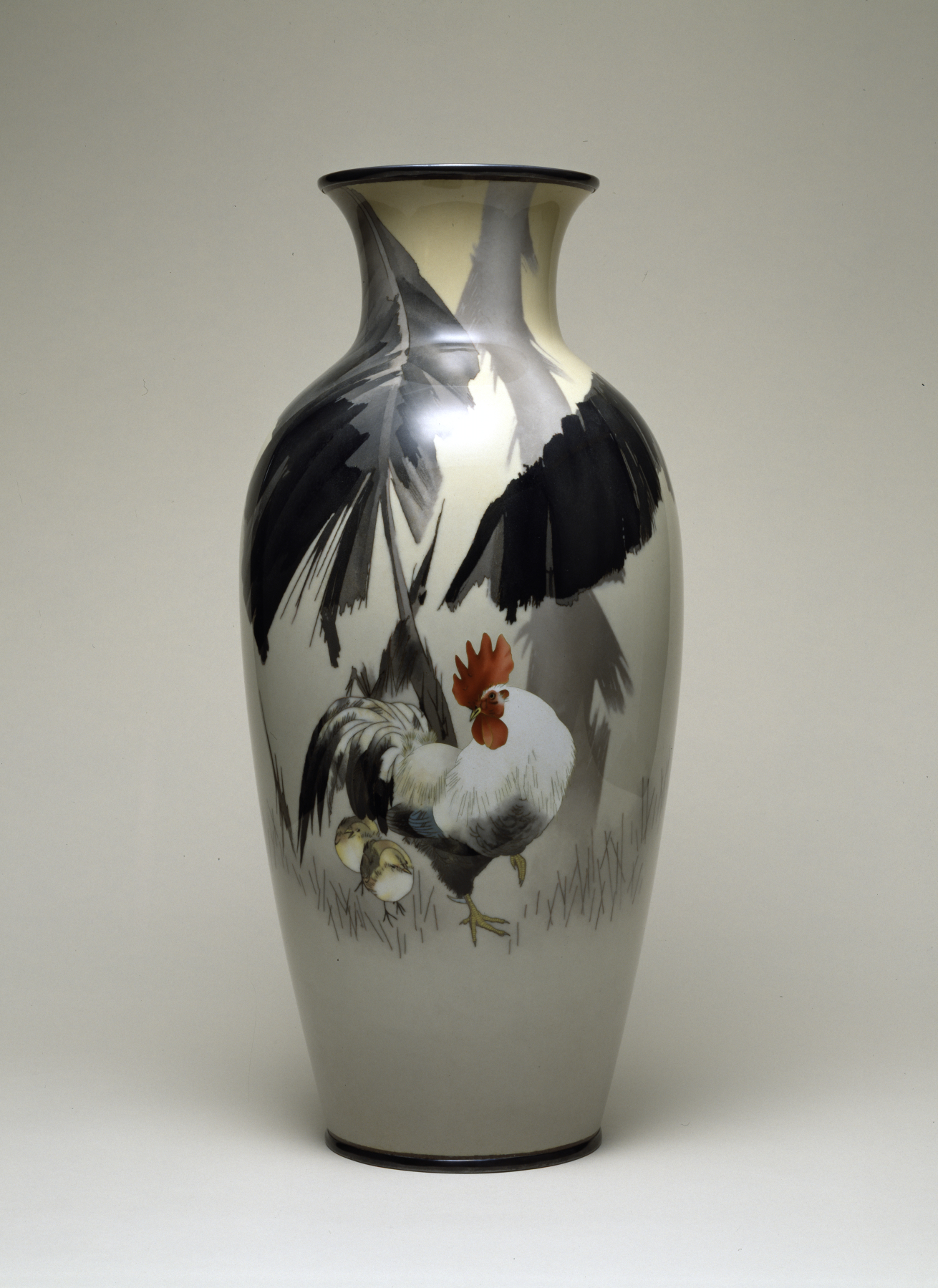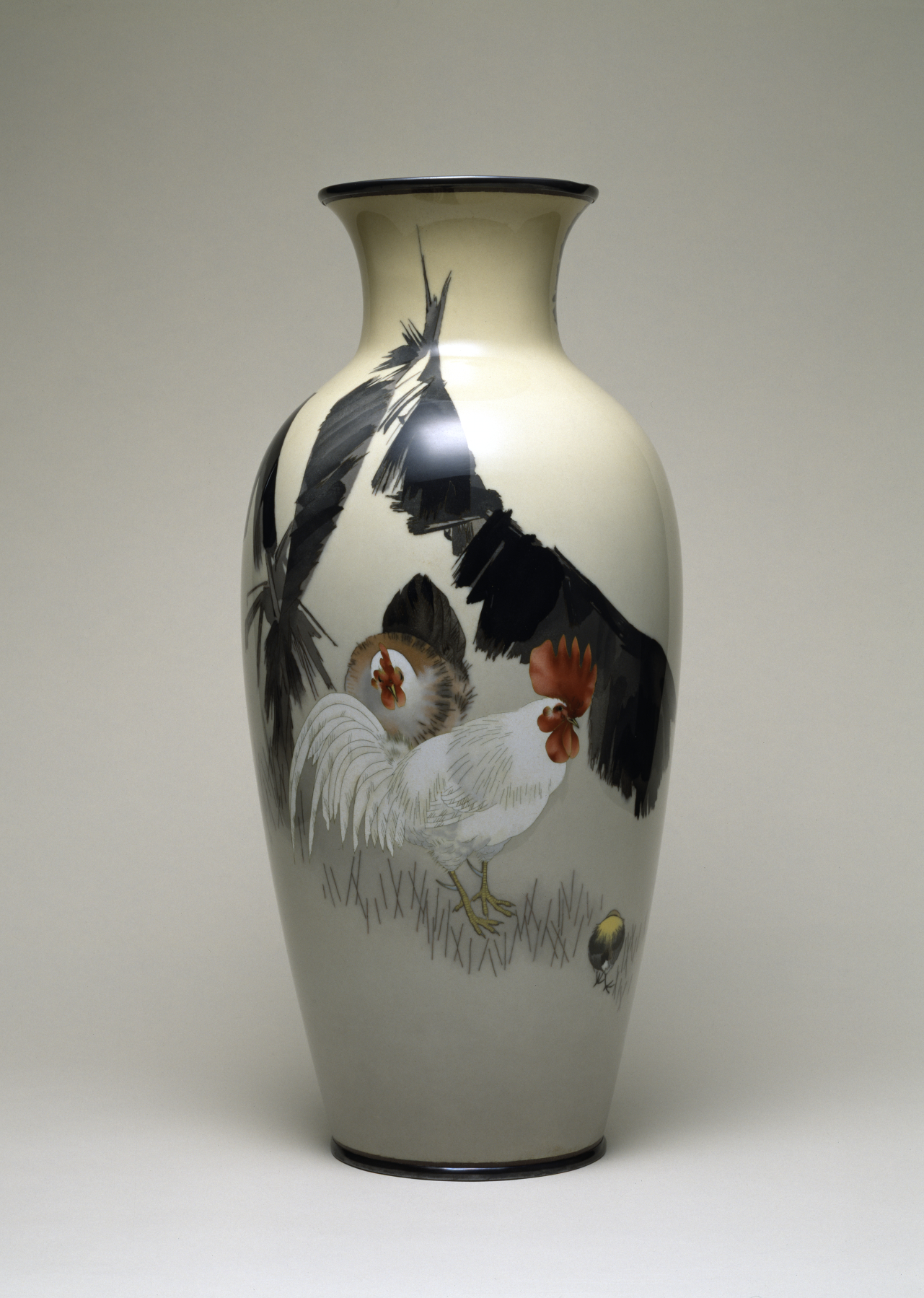Vase with Rooster, Hen, and Chicks among Banana Plants
(Japan and Korea )
This cloisonné vase features a rooster, a hen, and chicks among banana plants. Beginning in the 1880s, Japanese cloisonné artists developed wireless cloisonné (musen shippō), a technique for which Namikawa Sōsuke was renowned. This vase shows no traces of the metal wires that initially outlined the animals and plants. The effect was achieved by taking off the metal wires before each of the three firings, resulting in a cloisonné design that the artist intended to look like a painting.
Provenance
Provenance (from the French provenir, 'to come from/forth') is the chronology of the ownership, custody, or location of a historical object. Learn more about provenance at the Walters.
Edward Higginson Williams (1824-1899), Philadelphia, Pennsylvania and Woodstock, Vermont; Edward Higginson Williams Collection Sale, Christie's, New York, October 12, 1979; Lynne C. and Michael H. Lerner, Hoboken, New Jersey and New York [date and mode of acquisition unknown]; Walters Art Museum, 1995, by gift.
Exhibitions
| 2025 | Japanese Cloisonne Enamels. The Walters Art Gallery, Baltimore. 1996-0. |
Geographies
Japan, Tokyo (Place of Origin)
Measurements
H: 19 7/8 × Diam: 9 in. (50.5 × 22.9 cm)
Credit Line
Gift of Lynne and Michael Lerner, 1995
Accession Number
In libraries, galleries, museums, and archives, an accession number is a unique identifier assigned to each object in the collection.
In libraries, galleries, museums, and archives, an accession number is a unique identifier assigned to each object in the collection.
44.691




